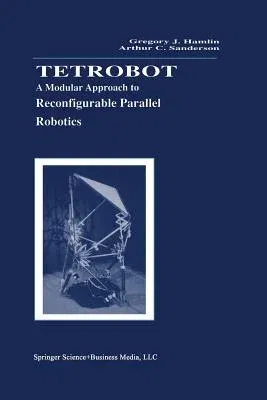Robotic systems are characterized by the intersection of computer
intelligence with the physical world. This blend of physical reasoning
and computational intelligence is well illustrated by the Tetrobot study
described in this book.
Tetrobot: A Modular Approach to Reconfigurable Parallel Robotics
describes a new approach to the design of robotic systems. The Tetrobot
approach utilizes modular components which may be reconfigured into many
different mechanisms which are suited to different applications. The
Tetrobot system includes two unique contributions: a new mechanism (a
multilink spherical joint design), and a new control architecture based
on propagation of kinematic solutions through the structure. The
resulting Tetrobot system consists of fundamental components which may
be mechanically reassembled into any modular configuration, and the
control architecture will provide position control of the resulting
structure.
A prototype Tetrobot system has been built and evaluated experimentally.
Tetrobot arms, platforms, and walking machines have been built and
controlled in a variety of motion and loading conditions.
The Tetrobot system has applications in a variety of domains where
reconfiguration, flexibility, load capacity, and failure recovery are
important aspects of the task.
A number of key research directions have been opened by the Tetrobot
research activities. Continuing topics of interest include: development
of a more distributed implementation of the computer control
architecture, analysis of the dynamics of the Tetrobot system motion for
improved control of high-speed motions, integration of sensor systems to
control the motion and shape of the high-dimensionality systems, and
exploration of self-reconfiguration of the system.
Tetrobot: A Modular Approach to Reconfigurable Parallel Robotics will
be of interest to research workers, specialists and professionals in the
areas of robotics, mechanical systems and computer engineering.


